 |
 |
 |
| |
GLOBAL TRENDS IN CAUSE-SPECIFIC MORTALITY AND DISABILITY
ADJUSTED LIFE YEARS RELATED TO HEPATITIS B VIRUS
AND HEPATITIS C VIRUS FROM 2010 TO 2019
|
| |
| |

Conclusion: While overall declines in mortality and DALYs were observed for HBV cirrhosis and acute HCV, continued rise in mortality due to HBV-HCC, HCV cirrhosis, and HCV-HCC is concerning, particularly among younger individuals with HCV.
AASLD 2021 Nov 12-15
Nicolette Veracruz, College of Medicine, Central Michigan University, Robert G. Gish, Hepatitis B Foundation, USA, Ramsey C. Cheung, Division of Gastroenterology and Hepatology, Veterans Affairs Palo Alto Health Care; Division of Gastroenterology and Hepatology, Department of Medicine, Stanford University Medical Center and Robert J. Wong, Gastroenterology and Hepatology, Veterans Affairs Palo Alto Healthcare System; Gastroenterology and Hepatology, Stanford University School of Medicine
Background: Hepatitis B virus (HBV) and hepatitis C virus (HCV) infections contribute to significant global morbidity and mortality. Despite availability of effective antiviral therapies, disparities in timely diagnosis and linkage to care have stalled global elimination progress, leading to continued disease progression and mortality. We aim to evaluate global trends in HBV and HCV related mortality and disability adjusted life years (DALYs).
Methods: The Global Burden of Diseases, Injury, and Risk Factors Study from 2010-2019 was evaluated to determine overall mortality rates and DALYs for patients with HBV or HCV, stratified by acute infection, cirrhosis, or hepatocellular carcinoma (HCC). DALYs were calculated as sum of years of life lost due to premature death and years lived with disability. Mortality and DALYs estimates were age-standardized and percent change from 2010 to 2019 was stratified by age and sex.
Results: From 2010 to 2019, significant declines in mortality were observed for patients with HBV cirrhosis (-11.8%, 95% CI -16.5 to -6.1, p<0.05) and acute HCV (-26.1%, 95% CI -40.5 to -3.9, p<0.05). However, significant increases in mortality were observed for patients with HBV-HCC (14.4%, 95% CI 1.7-29.0, p<0.05), HCV cirrhosis (7.5%, 95% CI 3.3-12.1, p<0.05), and HCV-HCC (15.3%, 95% CI 10.6-21.1, p<0.05). When stratified by sex, men experienced significant increases in mortality for HBV-HCC (16.7%, p<0.05), HCV cirrhosis (8.3%, p<0.01), and HCV-HCC (16.5%, p<0.05). Women experienced significant declines in HBV cirrhosis mortality (-10.0%, p<0.05), but increases in HCV cirrhosis and HCV-HCC mortality were observed. When stratified by age, adults age 25-49y had significantly increased HCV cirrhosis and HCV-HCC mortality, whereas adults age 50-69y and age >70y had significant declines in HBV cirrhosis mortality (Table). From 2010 to 2019, the impact of HBV on DALYs decreased by 14.2% and 6.7% for adults with acute HBV and HBV cirrhosis, respectively, but increased by 20.5% for HBV-HCC. Similarly, DALYs decreased by 28.4% for acute HCV, but increased by 12.2% and 21.6% for adults with HCV cirrhosis and HCV-HCC, respectively.
Conclusion: While overall declines in mortality and DALYs were observed for HBV cirrhosis and acute HCV, continued rise in mortality due to HBV-HCC, HCV cirrhosis, and HCV-HCC is concerning, particularly among younger individuals with HCV.
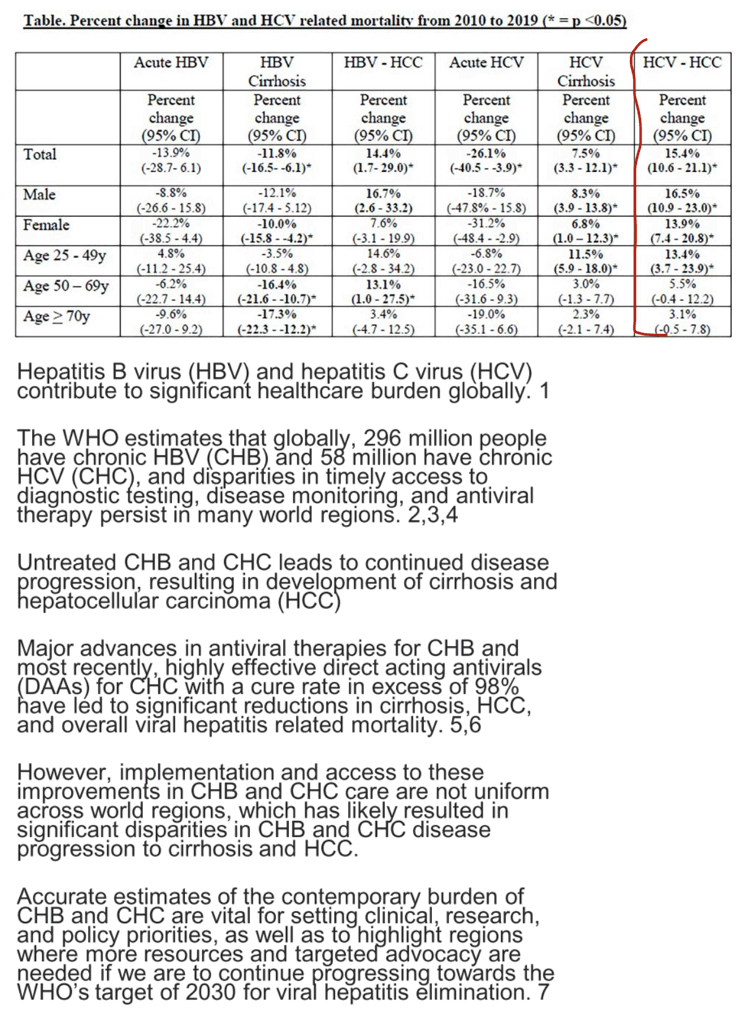
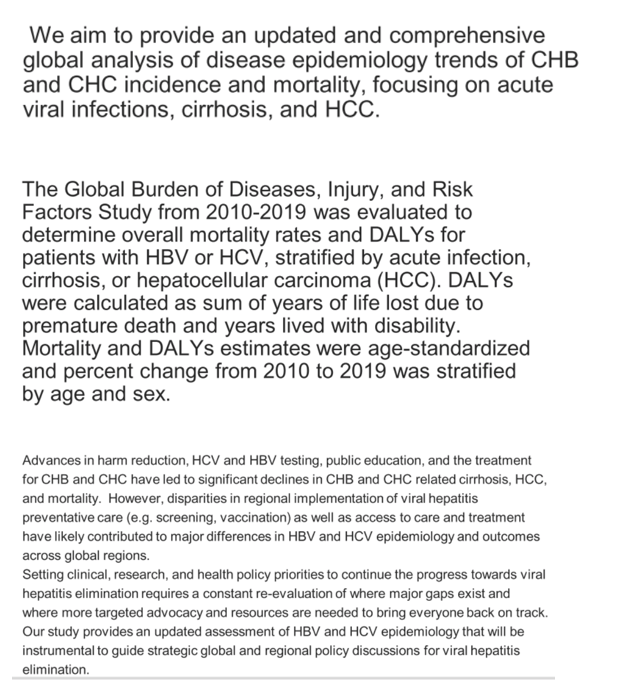
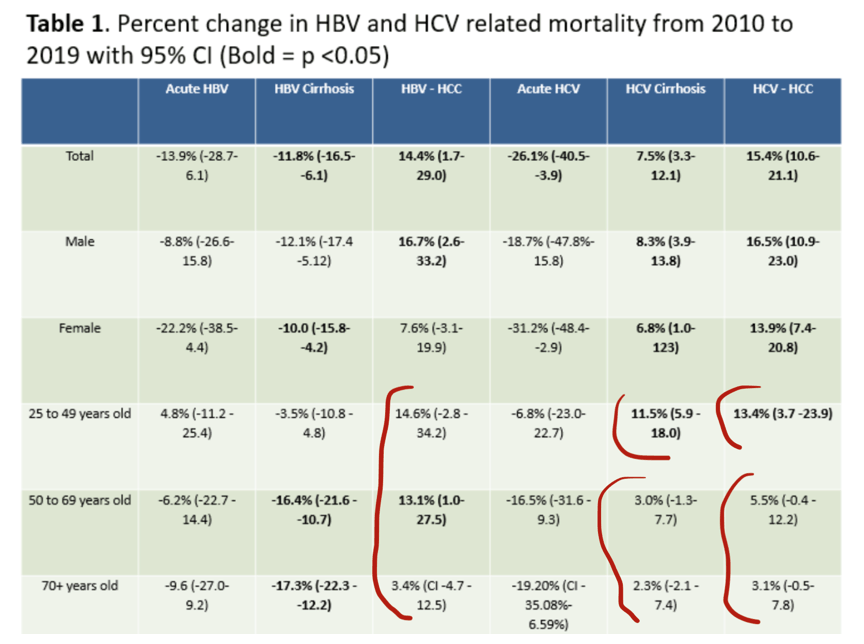
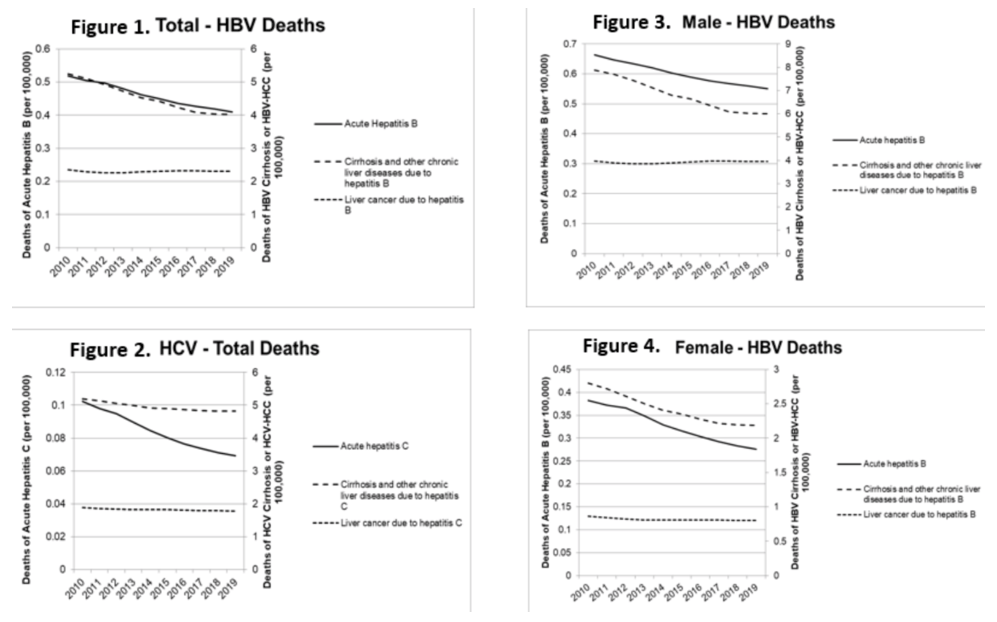
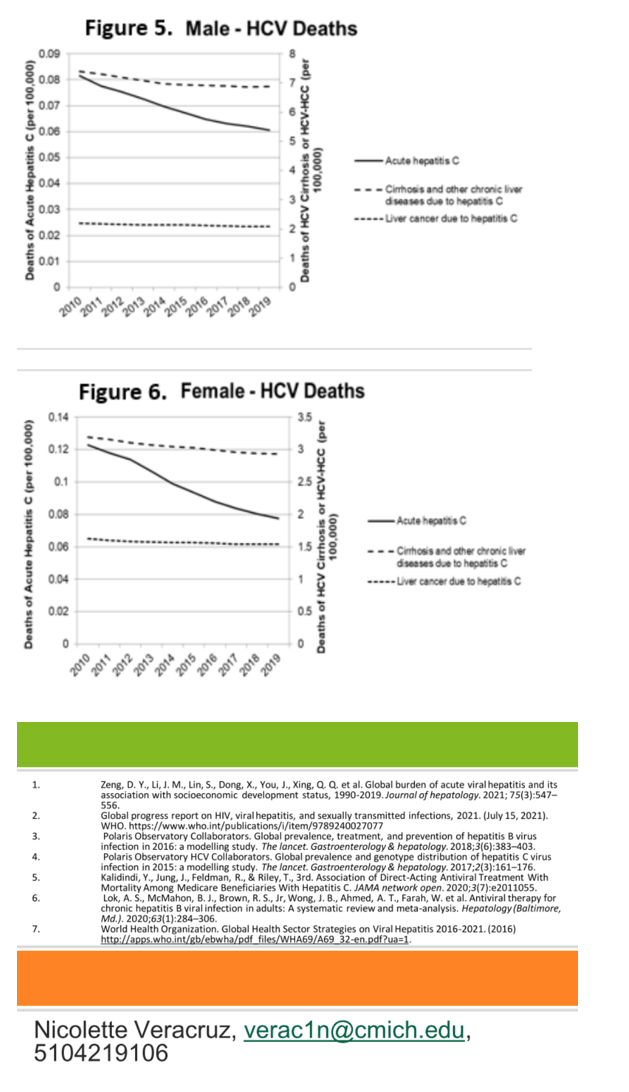
|
| |
|
 |
 |
|
|